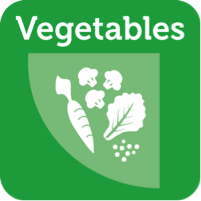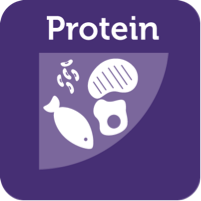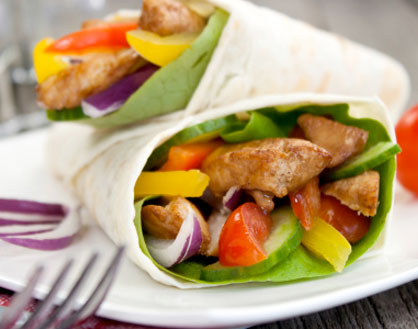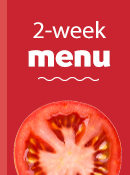Eating healthy can be easier than you think. Just remember the food groups! When you plan or prepare meals and snacks, try to include choices from all the MyPlate food groups to meet your calorie and nutrient needs.
FOOD GROUPS
Focus on whole fruits.
Fruits are a tasty way to add some nutrition to your snacks and meals. Kids love the bright flavors, beautiful colors and different shapes and sizes they come in. Here are some easy tips to help you bring them into your home:
- Keep a bowl of whole fruit on your table, counter or in the refrigerator.
- Refrigerate cut-up fruit to save for later.
- Buy fresh fruits in season when they may be less expensive and at their peak flavor.
- Buy fruits that are dried, frozen and canned (in water or 100% juice) as well as fresh, so you always have some on hand.
- Try pre-cut packages of fruit (such as melon or pineapple chunks) for a healthy snack in seconds.
- Select packaged fruits without added sugars or canned fruits that are canned in fruit juice rather than syrup.
Vary your veggies.
Not all vegetables are the same. Seriously! There are basically 4 different groups— dark-green vegetables, red and orange vegetables, legumes (beans and peas) and starchy vegetables. Take a look at these tips to learn how to bring these perfect pieces of yumminess to your kitchen:
- Buy fresh vegetables in season. They cost less and are likely to be at their peak flavor.
- Look into farmers markets—vegetables can be cheaper here, especially with SNAP discounts.
- Stock up on frozen vegetables for quick and easy cooking without chopping!
- Buy vegetables that are easy to prepare. Pick up pre-washed bags of salad greens, and add baby carrots or grape tomatoes for a salad in minutes. Buy ready-to-eat packages of veggies such as baby carrots or celery sticks for quick snacks.
- Use a microwave to quickly “zap” vegetables. You can cook potatoes or sweet potatoes quickly this way.
- Vary your veggie choices to keep meals interesting.
- Try crunchy vegetables raw or lightly steamed.
 Make half your grains whole grains.
Make half your grains whole grains.
Grains. They’re in so many of our favorite foods and can be good for us. Especially if they’re whole grains.
Grains you buy at the supermarket or dollar store are either whole grains or refined grains. Examples of WHOLE grains include whole-wheat flour, bulgur (cracked wheat), oatmeal, whole cornmeal and brown rice. Some examples of REFINED grains include white flour, white rice and white bread.
- Try to make at least half of the grains you eat whole grains. Whole grains contain important nutrients, and may help reduce your cholesterol levels or lower your risk of heart disease, obesity and type 2 diabetes. Fiber from whole grains is also important for good bowel function.
- Choose whole grains to help you feel full while eating fewer calories.
- Let your kids help you make a whole-grain side dish. The more they’re involved in creating a meal, the more into eating they’ll be.
- Get in the habit of reading the Nutrition Facts label on products. Make sure you’re getting whole grains. Look for the first ingredient to say “whole grains” or “whole wheat.”
- Try eating whole grain snacks. These include whole grain cereal, whole grain crackers and popcorn, if made without added salt or butter.
Vary your protein routine.
It’s pretty simple—foods with protein can come from animals (seafood, meat, poultry and eggs) and plants (nuts, beans and peas*, seeds and soy products). Protein helps you or your family grow strong, and can make you feel full, longer. Here are some things to think about when buying protein-rich foods:
- Choose lean ground beef. To be considered “lean,” the product has to be at least 92% lean/8% fat.
- Buy skinless chicken parts, or take off the skin before cooking.
- Boneless skinless chicken breasts and turkey cutlets are the leanest poultry choices.
- Leaner is better. The leanest beef cuts include round steaks and roasts (eye of round, top round, bottom round, round tip), top loin, top sirloin, and chuck shoulder and arm roasts.
- The leanest pork choices include ham, pork loin, tenderloin and center loin.
- Choose lean turkey, roast beef, ham or low-fat lunchmeats for sandwiches instead of lunch/deli meats with more fat, such as regular bologna or salami.
- Choose seafood at least twice a week as your main protein food. Look for seafood rich in omega-3 fatty acids, such as salmon, trout and herring.
- Choose beans, peas or soy products as a main dish or as a side dish.
*Note: Beans and peas are also part of the Vegetable Group.
Dairy every day.
Dairy is delicious and can be good for you—especially when it’s low-fat or fat-free. Getting more dairy in your diet is easy as drinking milk, eating yogurt and cheese, or going for non-animal foods and drinks like soymilk. Here are some healthy and delicious ways to put more dairy in your life:
- Include milk or soymilk as a drink at meals. Choose fat-free or low-fat milk.
- If you usually drink whole milk, switch gradually to fat-free milk to lower saturated fat and calories. Try reduced fat (2%), then low-fat milk and yogurt (1%), and finally fat-free (skim).
- Add fat-free or low-fat milk instead of water to oatmeal and hot cereals.
- Use fat-free or low-fat milk when making condensed cream soups (such as cream of tomato).
- Eat fat-free or low-fat yogurt as a snack.
- Make a dip from yogurt for fruits or vegetables.
- Make fruit-yogurt smoothies in the blender.
- Top cut-up fruit with flavored yogurt for a quick dessert.
- Top casseroles, soups, stews or vegetables with shredded reduced-fat or low-fat cheese.
- Top a baked potato with fat-free or low-fat yogurt.













